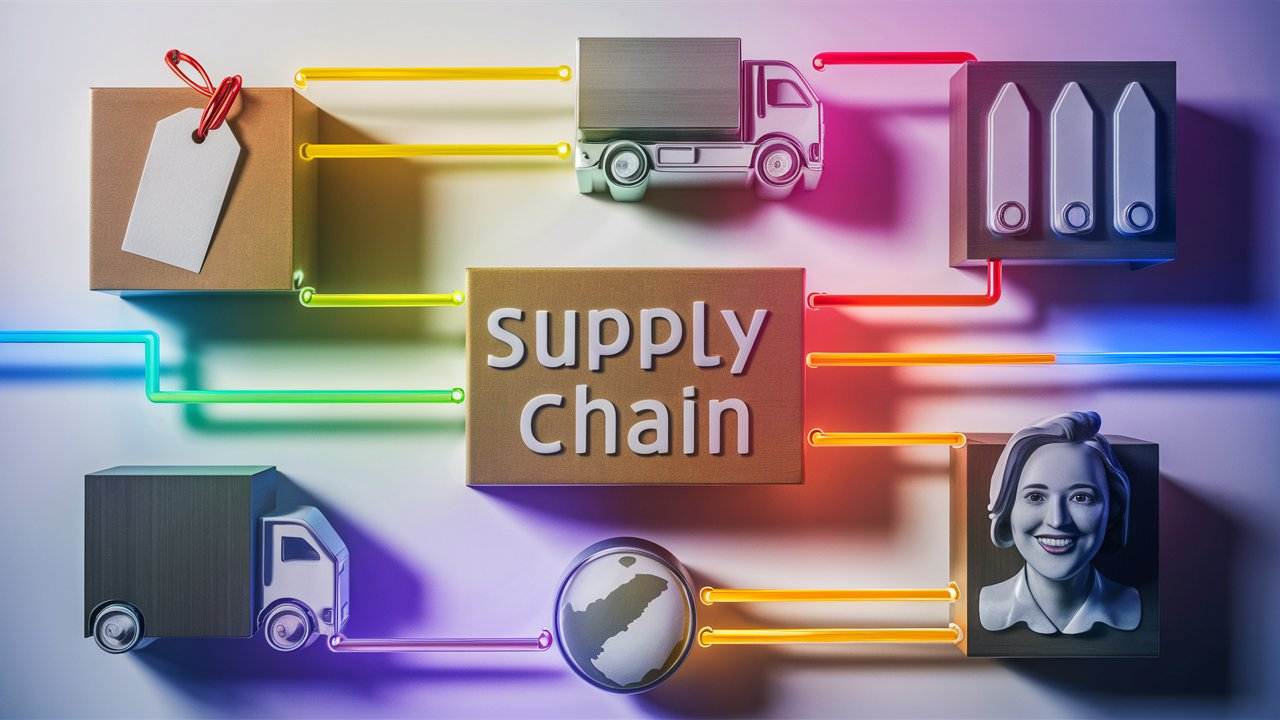Identifying the types of supply chain collaboration allows businesses to implement key strategies that drive efficiencies. Leveraging these collaborations can streamline operations and enhance supply chain management.
Collaborative Strategies for a Streamlined Supply Chain
Supply chain collaboration is all about working together with different people involved in the supply chain to make things run smoother and more efficiently. In today’s fast-paced business world, companies feel the heat to cut costs and keep customers happy. By using collaboration strategies, businesses can make their operations better and build a stronger supply chain.
Benefits of Collaboration
Working together in the supply chain brings many benefits that can really help a company’s finances. First off, there’s cost reduction; when companies team up with suppliers and partners, they can share resources and cut down on waste. Another big plus is improved efficiency; when processes are streamlined, response times get quicker, leading to better service. Plus, when companies meet customer demands promptly and accurately, it boosts customer satisfaction.
Internal Collaboration
Internal collaboration is about improving how different departments within a company communicate and work together. It creates an environment where everyone is aiming for the same goals. This teamwork not only helps communication but also makes decision-making easier across areas like procurement, logistics, and production planning.
But there are challenges too! Companies often face issues like organizational silos that can block effective collaboration. To tackle this:
- Establish Clear Roles: Make sure everyone knows their responsibilities.
- Encourage Open Dialogue: Have regular meetings to chat about what’s going well or what needs fixing.
- Utilize Technology: Use tools that allow teams to share information quickly.
By focusing on these points, businesses can create an atmosphere where internal collaboration thrives, leading to better operational efficiency.
External Collaboration
External collaboration means teaming up with suppliers, customers, and other people outside the organization. This kind of partnership gives access to outside knowledge that can spark innovation and help manage risks from market changes or disruptions in the supply chain.
While there are many benefits—like improved product quality through shared insights—managing these relationships effectively can be tricky. Companies need to build trust with partners while keeping communication clear for smooth interactions.
To boost external collaborations:
- Develop Strong Supplier Relationships: Regular check-ins can highlight areas needing improvement.
- Engage in Joint Planning Sessions: Work together on forecasts so everyone is on the same page regarding production schedules.
- Leverage Collaborative Technologies: Use software designed for vendor-managed inventory or collaborative transportation management to further streamline operations.
Both internal and external collaborations are key for making supply chains work better. By recognizing both the perks and challenges of each type of strategy—and applying best practices—companies can achieve greater operational efficiency while also keeping customers satisfied across their networks.
Types of Supply Chain Collaboration Structures
Horizontal Collaboration
Horizontal collaboration is when companies in the same industry team up to share resources and information. This can really cut costs because businesses can combine their logistics and distribution efforts. By sharing things like transportation assets and warehouses, they can work more efficiently and lower shipping costs.
But it’s not all smooth sailing. Companies must deal with competition while trying to cooperate. They need to make sure everyone gets a fair share of the benefits. Setting clear agreements about sharing resources and defining roles helps avoid conflicts. Trust is key here; regular communication about goals strengthens these partnerships over time.
Businesses should think about using collaborative transportation management systems. These tools give real-time visibility into shared logistics operations, helping to optimize routes and reduce empty miles. This not only improves efficiency but also boosts service levels for customers.
Vertical Collaboration
Vertical collaboration happens between different levels of the supply chain, like suppliers, manufacturers, distributors, and retailers. This type of teamwork improves how information flows across the supply chain network, which can lead to shorter lead times and better inventory management.
One big plus is that it helps with demand forecasting and capacity planning. By connecting data from suppliers with their own systems, organizations can adjust production schedules based on what the market needs right now. This way, products are available when needed without having too much stock sitting around.
Still, vertical collaboration has its challenges too. Sometimes bigger companies may take charge in negotiations or decision-making processes. To tackle this issue, all parties involved should agree on fair terms that promote respect and understanding.
Investing in technology like ERP systems makes it easier for different parts of the supply chain to share data smoothly. These tools help improve communication and allow organizations to react quickly to changes in demand or supply issues.
Cross-Enterprise Collaboration
Cross-enterprise collaboration involves partnerships between different organizations that might be in various industries but have similar goals or skills that complement each other. This kind of teamwork sparks innovation by combining each partner’s strengths.
The benefits include being quicker at responding to market changes and making customers happier with offerings created from diverse skill sets from each business involved. For example, if a tech company teams up with a logistics firm, they could create smarter delivery solutions that benefit both sides.
However, cross-enterprise collaborations can be tricky due to differences in organizational cultures and practices. It takes careful planning around data integration strategies so information flows smoothly between everyone involved.
To make cross-enterprise collaborations work:
- Set clear objectives that match both partners’ goals.
- Create joint decision-making processes that respect each organization’s culture.
- Use advanced software solutions for project management and real-time communication.
This approach helps build successful partnerships while reducing potential issues from differing corporate philosophies or ways of working together.

Collaborative Tools and Technologies
Collaborative tools and technologies are key to improving supply chain collaboration. They help different people involved in the supply chain communicate and work together better, which boosts operational efficiency and overall performance.
One major tool is Supply Chain Collaboration Software. This software gives real-time visibility into inventory levels, order statuses, and shipment tracking. By using this software, companies can make smarter decisions thanks to better data analytics. Plus, automated workflows cut down on errors, making it easier for businesses to streamline their operations.
Another important aspect is Collaborative Planning, Forecasting, and Replenishment (CPFR). CPFR helps organizations align their planning and forecasting with their partners. By sharing demand insights across the supply chain network, businesses can lower excess inventory while also raising customer satisfaction through improved service levels. However, challenges like data accuracy often pop up; so investing in strong systems that promote transparency is essential.
Vendor-Managed Inventory (VMI) is another smart strategy that boosts collaboration between suppliers and retailers. In a VMI system, suppliers take charge of managing inventory at the customer’s location based on agreed metrics. This method optimizes inventory management by cutting down waste while also strengthening supplier relationships through shared responsibilities.
To get the most out of these collaborative tools:
- Invest in Robust Technology Solutions: Make sure your organization has access to advanced software that supports real-time communication.
- Focus on Data Accuracy: Set up processes to ensure high-quality data input to avoid mistakes.
- Create User-Friendly Interfaces: Design systems that are easy to use so everyone involved can navigate them without much training.
In short, using collaborative tools like supply chain collaboration software, CPFR systems, and VMI strategies not only improves operational efficiency but also builds stronger relationships among supply chain partners.
Collaborative Planning, Forecasting, and Replenishment (CPFR)
Collaborative Planning, Forecasting, and Replenishment (CPFR) is a smart approach aimed at enhancing demand management across the supply chain by encouraging teamwork between trading partners. The main goal of CPFR is to line up forecasts with actual sales data effectively.
The benefits of CPFR include synchronized planning efforts that lead to lower inventory holding costs while ensuring product availability matches customer demands closely. This alignment boosts customer satisfaction as businesses can respond more quickly to market changes.
However, there are challenges when implementing CPFR:
- Data Accuracy: It’s crucial for all parties to have access to reliable data for effective forecasting.
- Long-term Collaboration Maintenance: Keeping ongoing communication and trust among partners takes commitment.
Organizations wanting to implement CPFR should focus on creating clear guidelines for data sharing while promoting an environment where open discussions about expectations can thrive.
Vendor-Managed Inventory (VMI)
Vendor-Managed Inventory (VMI) is a smart strategy where suppliers manage product inventories at customers’ locations based on criteria like sales patterns or stock thresholds. This approach allows for optimized inventory levels since suppliers have better insight into demand changes than customers might have alone.
The main benefits of VMI include less waste due to reduced overstock situations while also strengthening supplier relationships through shared accountability for stock management practices. However:
- Trust Issues: Both parties need to build trust since the supplier controls what they deliver.
- Control Over Inventory Management: Customers must feel confident about how well suppliers will manage stock without compromising service quality or delivery times.
To successfully implement VMI:
- Set clear expectations regarding roles within the partnership.
- Create success metrics that both parties agree upon before starting the implementation process.
By focusing on common goals within these frameworks—whether it’s CPFR or VMI—organizations can greatly improve their overall supply chain performance through better collaboration strategies.

Challenges and Solutions in Supply Chain Collaboration
Identifying Barriers to Collaboration
Identifying barriers to collaboration is key for improving supply chain efficiency. One big issue is communication. When there aren’t good communication channels, misunderstandings can happen, leading to confusion among everyone involved. Setting up clear processes for communication can help keep everyone aligned.
Another major barrier is trust. If partners don’t trust each other, they might hold back important information or avoid working closely together. Building strong relationships through honesty and openness is vital for overcoming this challenge. When partners feel secure, they are more likely to share insights freely.
Lastly, technology can create its own set of problems. Different systems not working well together can stop real-time data sharing and visibility. Companies need to invest in solid technology solutions that allow for smooth integration and protect data security. Tackling these tech issues can greatly boost operational efficiency.
Overcoming Collaboration Challenges
To tackle the challenges in supply chain collaboration, organizations can use several effective strategies:
- Communication: Set up clear communication protocols that outline roles and responsibilities for team members. This way, everyone knows what they need to do in the collaborative effort.
- Trust: Foster trust by having regular meetings and aligning on shared goals. Being transparent about operations helps create a culture where partners feel safe sharing sensitive information.
- Technology: Invest in modern technology solutions that improve collaboration abilities. Keeping data accurate across different platforms will lead to better decision-making.
Also, organizations should think about using collaborative planning tools that support joint decision-making among partners. These tools help teams predict demand accurately and align their efforts toward common goals.
By addressing these barriers and putting effective strategies into action, organizations can significantly improve their supply chain collaboration efforts and enhance operational efficiency throughout their networks.
Focusing on better communication, building trust, and utilizing technology are crucial steps toward successful supply chain collaboration. Taking these proactive actions helps businesses optimize supplier relationships while creating a more agile operation that meets market demands effectively.

